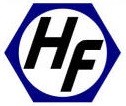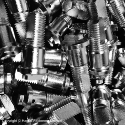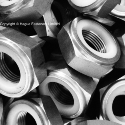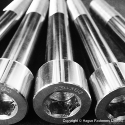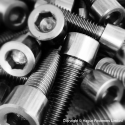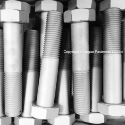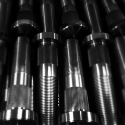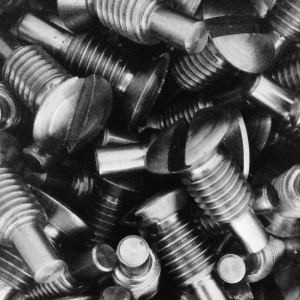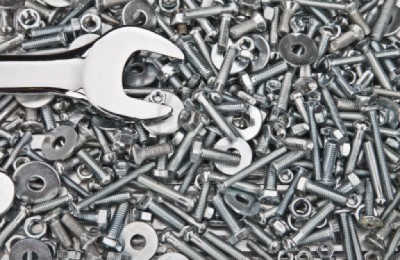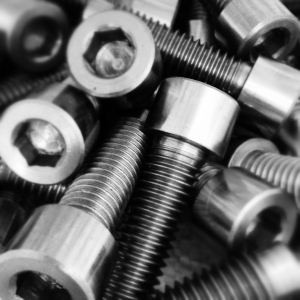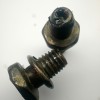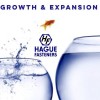Hague Special Fasteners Ltd
Hague Fasteners specialise in the manufacture and supply of all types of custom fasteners, special fasteners and bespoke items to Customer's Designs and OEM Drawings including all types of threaded and milled special fasteners in many different types of materials.
Since 1971, we have been manufacturing a vast range of non-standard custom fasteners and components for a multitude of industries, including oil and gas, power generation, shipbuilding and construction.
We use an assortment of materials including carbon, stainless and non-ferrous steels as well as titanium, monel, hastelloy, duplex and super duplex grades.
-
CARBON NEUTRAL 2021 TO 2030
1 September 2023In conjuction with our ‘Hague Forest’ tree planting scheme, Hague Fasteners are proud to re-affirm that we are a Carbon Neutral and Carbon Negative Company.
Hague have invested into the United Nations Framework Convention On Climate Change Project under CDM Project 2535: CUIDEMOS Mexico (Campana De Uso Intelegente De Energia Mexico) – Smart Use of Energy Mexico, to retire Carbon Credits which sees us offset our Carbon Footprint from 2021 and then retired through to and including 2030.
With the addition of our ongoing tree planting scheme we are ensuring that we have a positive impact on the environment, removing more carbon from the atmosphere than we create through our operation whilst supporting economic and environmental projects and development in Nepal, Kenya, Honduras, Madagascar & The Philippines.
Further Reading:-
Hague Fateners Carbon Footprint
-
BOLDMERE FC JUNIORS GRASSROOTS FOOTBALL SPONSORSHIP
3 July 2023Hague Fasteners Announces 2-Year Sponsorship of Boldmere FC Juniors, Led by Former Premier League Star Karl Henry
In a remarkable move to support grassroots football, Hague Fasteners, a leading manufacturer of industrial fasteners, has proudly announced its two-year sponsorship of Boldmere FC Juniors. This exciting partnership aims to strengthen the local community and provide invaluable opportunities for aspiring young footballers. The youth team is under the expert guidance of retired Premier League Wolverhampton Wanderers midfielder, Karl Henry.
Under the leadership of Karl Henry, the former Wolverhampton Wanderers star who enjoyed a successful career in the Premier League, Boldmere FC Juniors has become a renowned breeding ground for young talent. Henry’s experience and dedication to nurturing young players have earned him immense respect within the footballing community.
Boldmere FC Juniors has a rich history dating back to its establishment in 1978. The club, based in Boldmere, Sutton Coldfield, has consistently promoted the development of young talent and has gained a reputation for producing skilled players who have gone on to achieve success at higher levels of the game.
Hague Fasteners, known for their commitment to supporting local initiatives, recognizes the immense potential within the Boldmere FC Juniors setup. The two-year sponsorship deal will provide the necessary resources for the club to enhance its facilities, coaching staff, and player development programs. This investment will create a positive and inclusive environment for young footballers to thrive and fulfill their potential.
The collaboration between Hague Fasteners and Boldmere FC Juniors is already generating excitement within the local community. To celebrate the partnership, the club’s official Facebook page, “Boldmere St Michaels Juniors,” has been buzzing with social media posts sharing updates and glimpses into the team’s activities.
The Facebook page serves as a central hub for supporters and parents to stay informed about the club’s progress, upcoming fixtures, and achievements of its talented players. Additionally, it provides a platform for the community to engage with the club, fostering a sense of unity and support.
Hague Fasteners urges fans, parents, and local businesses to follow Boldmere St Michaels Juniors on Facebook and engage with the club’s social media presence to stay connected and share in the excitement of this promising partnership.
With the sponsorship from Hague Fasteners, Boldmere FC Juniors is poised to make significant strides in developing young football talent and achieving their ambitions on and off the pitch. The investment will enable the club to provide top-notch coaching, improve facilities, and nurture the next generation of football stars.
This collaboration between Hague Fasteners and Boldmere FC Juniors, under the guidance of Karl Henry, is a testament to the shared belief in the power of football to positively impact young lives and strengthen local communities. The future looks bright for Boldmere FC Juniors, as they embark on this exciting new chapter with the support of Hague Fasteners.
-
TREE PLANTING UPDATE
1 June 2023Working with our tree planting partners across the world, we are proud to announce this Tree Planting Update that we have now planted 571 Trees, smashing our annual target, supporting local communities to restore healthy forests and reduce extreme poverty in Madagascar, Kenya and Haiti and aiding Conservation & Water channeling, and supporting Communities & Wildlife, whilst further improving food security and supply.
You can read more about the projects we are commited to at https://moretrees.eco/projects/ and how this Tree Planting Update shows our commitment to improving our World.
In an era of increasing environmental concerns, the importance of carbon sequestration and supporting tree planting initiatives cannot be overstated. In particular, the countries of Madagascar, Haiti, and Kenya hold tremendous significance due to their ecological diversity and vulnerability to climate change. As we navigate the challenges of the 21st century, it is imperative for all companies to recognize their role in environmental responsibility and join forces to protect the world we live in.
As stewards of the environment, companies must embrace their role in promoting sustainability and combating climate change. By supporting carbon sequestration and tree planting initiatives, businesses demonstrate their commitment to a greener future, mitigate their carbon footprint, and inspire others to follow suit. Collaborative efforts between companies, governments, and local communities in Madagascar, Haiti, and Kenya can lead to profound positive changes and pave the way for a more sustainable world.
Madagascar: Preserving Biodiversity, Fighting Climate Change: With its unique flora and fauna, Madagascar is a biodiversity hotspot facing unprecedented challenges. Deforestation has accelerated, leading to habitat loss and increased carbon emissions. By investing in tree planting initiatives, companies can actively participate in reforestation efforts, restoring critical ecosystems such as the lush rainforests of Ranomafana and the iconic baobab forests. This support will not only help in carbon sequestration but also safeguard countless species from extinction.
Haiti: Reforestation for Resilience: Haiti, known for its rich cultural heritage, is grappling with severe environmental degradation. Rampant deforestation has resulted in soil erosion, increased vulnerability to natural disasters, and diminished livelihoods for local communities. Supporting tree planting initiatives in Haiti can revitalize ecosystems, enhance soil stability, and provide sustainable economic opportunities. Companies can play a pivotal role in reforestation efforts, protecting Haiti’s natural heritage and empowering its people.
Kenya: Greening the Land, Empowering Communities: Kenya, a country celebrated for its stunning landscapes and diverse wildlife, faces numerous environmental challenges, including deforestation and desertification. By engaging in tree planting initiatives, companies can combat desertification, enhance carbon sequestration in expansive forests like the Maasai Mara, and uplift local communities through sustainable agroforestry practices. Investing in Kenya’s environmental future is not only a responsible choice but also an opportunity to promote social and economic well-being.
you can read more about our Carbon Footprint focus & initiatives at https://www.haguefasteners.co.uk/carbon-footprint/ and see realtime Tree Planting Update at our Hague Forest page.
-
EFFECTS OF CORROSION ON FASTENER PERFORMANCE AND INTEGRITY
1 June 2023Corrosion is a formidable and persistent challenge faced by the fastener industry, exerting a detrimental impact on the performance and integrity of fasteners. It occurs as a result of metals coming into contact with moisture, air, and other corrosive elements, initiating a series of chemical reactions that ultimately lead to the breakdown of the metal and the deterioration of the fastener. Understanding the various types of corrosion, their effects on fastener performance, and implementing effective mitigation techniques and preventive measures are crucial for ensuring the longevity and reliability of fasteners in diverse applications.
There exist several distinct types of corrosion that can significantly affect fasteners, each presenting its own unique characteristics and risks:
- Uniform corrosion: This form of corrosion manifests as a gradual loss of material, spreading evenly across the entire surface of the fastener. As the material erodes, the strength of the fastener diminishes, posing a potential threat to structural integrity.
- Pitting corrosion: Pitting corrosion is characterized by the formation of small pits or holes on the surface of the fastener. These pits can rapidly grow in size, compromising the structural integrity of the fastener and potentially leading to premature failure, even when subjected to relatively low loads.
- Galvanic corrosion: Galvanic corrosion arises when two dissimilar metals come into contact with each other in the presence of an electrolyte. This contact creates an electrochemical cell, initiating an electrical current that causes corrosion to occur more rapidly in the less noble metal. The galvanic corrosion process can result in severe material degradation and structural weakness.
- Crevice corrosion: Crevice corrosion arises in areas where there is limited access to oxygen or water, such as tight spaces between fasteners or beneath washers. The confined environment hinders proper ventilation and drainage, allowing corrosive elements to accumulate and promote localized corrosion. Crevice corrosion can pose a significant risk, as it often goes unnoticed until substantial damage has already occurred.
The impact of corrosion on fastener performance cannot be overstated. Corrosion weakens the fastener, diminishing its load-bearing capacity and making it susceptible to premature failure under normal or even moderate loads. Furthermore, corrosion can compromise the thread strength of the fastener, rendering it more prone to stripping or shearing. Additionally, the corrosion process can loosen the fastener, resulting in a loss of clamping force and potentially compromising the structural integrity of the assembly.
To combat the adverse effects of corrosion, a range of mitigation techniques and preventive measures are available:
- Corrosion-resistant coatings: Applying specialized coatings, such as zinc plating or organic coatings, to the surface of the fastener can provide an effective barrier against corrosive elements. These coatings act as sacrificial layers, sacrificially corroding to protect the underlying fastener material.
- Selection of appropriate materials: Opting for fasteners made from materials that inherently possess high corrosion resistance, such as stainless steel or other corrosion-resistant alloys, is an effective preventive measure. These materials exhibit superior resistance to corrosion, ensuring the longevity and reliability of fasteners in challenging environments.
- Lubrication: The application of lubricants serves multiple purposes in corrosion prevention. Lubricants not only create a protective barrier between the fastener and corrosive elements but also enhance the tightening torque during installation, thereby improving the clamping force and reducing the likelihood of fastener failure.
- Cathodic protection: Cathodic protection involves employing sacrificial anodes made of more reactive metals, such as zinc or aluminium, in close proximity to the fasteners. These sacrificial anodes attract corrosive elements and corrode themselves, thus shielding the fasteners from corrosion by acting as a sacrificial layer.
- Inspection and maintenance: Regular inspection and maintenance practices play a vital role in detecting and addressing corrosion-related issues promptly.
Routine inspection and maintenance procedures are essential for identifying early signs of corrosion and preventing its progression. Regular visual inspections can help detect visible signs of corrosion, such as discoloration, pitting, or surface irregularities. Additionally, non-destructive testing techniques, such as ultrasonic testing or magnetic particle inspection, can be employed to assess the internal integrity of fasteners and identify hidden corrosion.
Incorporating preventive measures into maintenance routines is crucial for effective corrosion management. This includes implementing a proactive approach to remove and replace corroded fasteners promptly. Corroded fasteners should be replaced with new ones that are resistant to corrosion, ensuring the continued structural integrity and reliability of the assembly.
Moreover, conducting regular cleaning and maintenance of fasteners is paramount. Removing accumulated dirt, debris, and corrosive contaminants from fastener surfaces reduces the risk of corrosion initiation and progression. It is advisable to utilize appropriate cleaning agents and techniques that are compatible with the fastener material to avoid causing any additional damage.
Education and training on corrosion awareness and prevention should be provided to personnel involved in fastener handling, installation, and maintenance. By raising awareness about the detrimental effects of corrosion and the importance of preventive measures, employees can actively contribute to maintaining the integrity of fasteners throughout their lifecycle.
Collaboration with suppliers and manufacturers is also crucial in mitigating the impact of corrosion on fastener performance. Engaging in a dialogue with suppliers can ensure the procurement of high-quality, corrosion-resistant fasteners that meet the specific requirements of the intended application. Manufacturers can provide guidance on material selection, surface treatments, and coating options that offer enhanced corrosion protection.
In conclusion, corrosion poses significant challenges to the fastener industry, affecting the performance and integrity of fasteners. Understanding the various types of corrosion, their effects, and implementing appropriate mitigation techniques and preventive measures are vital for ensuring the longevity and reliability of fasteners. By employing corrosion-resistant coatings, selecting suitable materials, practicing proper lubrication, utilizing cathodic protection, and conducting regular inspection and maintenance, fastener manufacturers and users can effectively combat the adverse effects of corrosion, ensuring the safe and reliable operation of their products in diverse environments.
-
FASTENER FATIGUE LIFE AND FAILURE ANALYSIS IN HARSH OFFSHORE ENVIRONMENTS
1 June 2023The offshore oil industry operates in some of the harshest environments on earth, with subsea equipment and pipelines subjected to extreme conditions such as high pressure, temperature, and corrosive seawater. Fasteners used in these environments are critical components that hold everything together, and their failure can have serious consequences such as leaks, spills, and equipment damage. This publication focuses on the impact of seawater exposure and cyclic loading on bolt failure in offshore platforms and recommends preventive measures to mitigate this risk.
Fastener fatigue life
Fastener fatigue is a common mode of failure in offshore platforms, where equipment and pipelines are subjected to cyclic loading over long periods. This loading can cause microscopic cracks to form in the fastener material, which can grow and eventually lead to catastrophic failure. Fastener fatigue life is influenced by several factors, including the material properties, the design of the joint, the loading conditions, and the operating environment.
Material properties
The choice of material for fasteners is critical in harsh offshore environments, where seawater exposure and corrosive gases can cause rapid degradation of certain materials. Common materials used for fasteners in offshore platforms include carbon steel, alloy steel, and stainless steel. Carbon steel is the most common material due to its high strength and low cost, but it is also susceptible to corrosion in seawater. Alloy steel and stainless steel are more resistant to corrosion, but they are also more expensive and may not be suitable for all applications.
Design of the joint
The design of the joint can also have a significant impact on fastener fatigue life. Factors such as the size and shape of the fastener, the number of fasteners, and the preload applied to the joint can all affect the fatigue behaviour. For example, joints with too few fasteners or insufficient preload may experience higher stress concentrations and be more prone to fatigue failure.
Loading conditions
The loading conditions that fasteners are subjected to can also impact fatigue life. In offshore platforms, cyclic loading is common due to the continuous movement of the platform caused by waves and wind. The frequency and magnitude of the cyclic loading can vary depending on the location and weather conditions, and can significantly affect the fatigue behaviour of the fasteners.
Operating environment
The operating environment in offshore platforms can also affect fastener fatigue life. Seawater exposure is a major concern, as it can cause corrosion and stress corrosion cracking in certain materials. The presence of corrosive gases such as hydrogen sulphide can also accelerate degradation and increase the risk of failure.
Case study: Impact of seawater exposure and cyclic loading on bolt failure
To illustrate the impact of seawater exposure and cyclic loading on bolt failure in offshore platforms, a case study is presented here. The case study focuses on a subsea pipeline connection in the North Sea, where several bolts failed after only a few years of service.
The pipeline connection consisted of two flanges, each with 12 bolts, that were connected using a bolt tensioning system. The bolts were made of carbon steel and had a diameter of 1 inch. The pipeline was exposed to seawater and subjected to cyclic loading due to the continuous movement of the platform caused by waves and wind.
After a few years of service, several bolts in the connection failed due to fatigue. Failure analysis revealed that the bolts had developed fatigue cracks at the root of the threads, which had grown and eventually led to complete fracture. The cracks were caused by the cyclic loading of the pipeline, which had exceeded the fatigue limit of the bolts.
Further analysis also revealed that the seawater exposure had accelerated the corrosion of the bolts, reducing their strength and contributing to the fatigue failure. The combination of cyclic loading and seawater exposure had therefore significantly reduced the fatigue life of the bolts, leading to premature failure.
Preventive measures
To prevent fastener failure in offshore platforms, several preventive measures can be implemented. These measures include:
- Material selection: Choosing the right material for fasteners is critical in offshore platforms. Corrosion-resistant materials such as alloy steel and stainless steel are preferred for applications where seawater exposure is a concern.
- Coatings: Applying coatings such as zinc, cadmium, or other anti-corrosion coatings can help protect fasteners from the corrosive effects of seawater. However, the coating must be carefully selected based on the specific application and environmental conditions.
- Preload: Properly tightening fasteners to the recommended preload can help distribute the load evenly and reduce stress concentrations. This can help prevent fatigue cracks from forming and improve the fatigue life of the joint.
- Inspection: Regular inspection of fasteners can help detect early signs of corrosion, cracking, or other defects. This can help identify potential problems before they become serious and allow for preventive measures to be implemented.
- Maintenance: Proper maintenance of offshore equipment and pipelines is critical to preventing fastener failure. Regular cleaning and inspection can help reduce the impact of seawater exposure and ensure that fasteners are functioning properly.
Conclusion
Fastener fatigue life and failure analysis are critical issues in offshore platforms, where equipment and pipelines are subjected to extreme conditions such as seawater exposure and cyclic loading. The case study presented here illustrates the impact of these factors on bolt failure and highlights the importance of preventive measures to mitigate the risk.
Proper material selection, coatings, preload, inspection, and maintenance can all help improve the fatigue life of fasteners and prevent premature failure. By implementing these measures, offshore operators can reduce the risk of equipment damage, spills, and environmental damage, and ensure the safe and reliable operation of their assets.
-
DUPLEX AND SUPERDUPLEX MATERIAL STUDY
2 May 2023Duplex and superduplex steels are advanced materials that offer superior mechanical, corrosion, and erosion resistance properties over conventional stainless steels. These alloys have a two-phase microstructure consisting of austenite and ferrite phases, resulting in improved strength, toughness, and resistance to stress corrosion cracking. These properties make duplex and super duplex stainless steels ideal for applications in aggressive environments such as the oil and gas, chemical, and marine industries.
Development of Duplex and Superduplex Stainless Steels
Duplex and super duplex stainless steels were developed in the 1930s and 1940s as a result of research into the corrosion resistance of stainless steels in acidic and chloride-containing environments. Early duplex stainless steels were low in nickel and high in chromium and molybdenum to improve their corrosion resistance. However, these alloys had limited toughness and ductility, which made them difficult to fabricate and prone to cracking during welding.
In the 1960s, the development of more advanced duplex stainless steels began, incorporating additional elements such as nitrogen, copper, and tungsten to improve their mechanical properties and welding characteristics. The addition of nitrogen, in particular, increased the strength, ductility, and corrosion resistance of duplex stainless steels, leading to the development of super duplex stainless steels.
Grades of Duplex and Superduplex Stainless Steels
- Duplex Stainless Steels (UNS S31803, S32205): These grades contain around 22% chromium, 5-6% nickel, and 3% molybdenum. They also have a small amount of nitrogen (0.1-0.2%) to improve their mechanical properties. Duplex stainless steels offer a good combination of strength, toughness, and corrosion resistance, making them suitable for a range of applications in the chemical, petrochemical, and pulp and paper industries.
- Super Duplex Stainless Steels (UNS S32750, S32760): Super duplex stainless steels contain around 25% chromium, 7% nickel, and 3.5% molybdenum, as well as 0.3% nitrogen. These alloys have higher strength and corrosion resistance than duplex stainless steels, making them suitable for use in more demanding applications such as offshore oil and gas production, desalination plants, and chemical processing.
- Lean Duplex Stainless Steels (UNS S32304): Lean duplex stainless steels contain around 21% chromium, 4.5% nickel, and 0.3% nitrogen. They offer good corrosion resistance and lower cost than other duplex stainless steels, making them suitable for applications in the food processing, wastewater treatment, and architectural industries.
- Hyper Duplex Stainless Steels: Hyper duplex stainless steels are a new generation of duplex stainless steels that offer even higher strength and corrosion resistance than super duplex stainless steels. They contain around 27% chromium, 7% nickel, 4% molybdenum, and 0.8% nitrogen. Hyper duplex stainless steels are currently being developed for use in highly corrosive environments such as offshore oil and gas production and chemical processing.
Trademarked Grades
There are several trademarked duplex and superduplex stainless steel grades that have been developed to meet specific application requirements. Some of the most common ones include:
- SAF 2205: This is one of the most widely used duplex stainless steel grades. It contains 22% chromium, 5% nickel, and 3% molybdenum, along with other alloying elements such as nitrogen and manganese. SAF 2205 offers excellent corrosion resistance, high strength, and good weldability, making it ideal for use in a range of applications, including oil and gas, chemical processing, and marine environments.
- SAF 2507: This is a super duplex stainless steel grade that contains 25% chromium, 7% nickel, and 4% molybdenum, along with other alloying elements such as nitrogen and copper. SAF 2507 offers even higher corrosion resistance and strength than SAF 2205, making it ideal for use in highly corrosive environments such as desalination plants and offshore structures.
- Zeron 100: This is another super duplex stainless steel grade that contains 25% chromium, 7% nickel, and 3.5% molybdenum, along with other alloying elements such as nitrogen and tungsten. Zeron 100 offers excellent corrosion resistance, high strength, and good weldability, making it ideal for use in a range of applications, including oil and gas, chemical processing, and marine environments.
- Ferralium 255: This is a super duplex stainless steel grade that contains 25% chromium, 7% nickel, and 3.5% molybdenum, along with other alloying elements such as nitrogen and copper. Ferralium 255 offers even higher corrosion resistance and strength than SAF 2507, making it ideal for use in highly corrosive environments such as desalination plants and offshore structures.
- LDX 2101: This is a lean duplex stainless steel grade that contains 21% chromium, 1.5% nickel, and 0.3% molybdenum, along with other alloying elements such as nitrogen and manganese. LDX 2101 offers good corrosion resistance and high strength, making it ideal for use in a range of applications, including chemical processing and marine environments.
Each of these duplex and super duplex stainless steel grades has been developed to meet specific application requirements. For example, SAF 2205 and Zeron 100 offer good weldability, while SAF 2507 and Ferralium 255 offer even higher corrosion resistance and strength for use in highly corrosive environments. LDX 2101, on the other hand, offers a more cost-effective solution for applications where high strength and good corrosion resistance are required but at a lower cost than super duplex stainless steels.
Super Duplex Zeron 100 Fastener Grades
Zeron 100 is further developed in higher strengths graded FG and FLT versions. Hague Fasteners have extensive experience working with these alloys.
Zeron 100 is a duplex stainless steel that is widely used in a variety of industrial applications. It is an alloy that contains a high percentage of chromium, molybdenum, and nitrogen, which provide it with exceptional corrosion resistance properties. It also has high strength and toughness, making it ideal for use in applications where mechanical stresses are present.
The higher strength graded FG and FLT versions of Zeron 100 are modifications of the standard alloy that have been designed to provide even greater strength and durability. These alloys have higher levels of nickel, nitrogen, and molybdenum, which provide them with even greater corrosion resistance and strength. They also have improved toughness, which is essential in applications where high mechanical stresses are present.
The FG version of Zeron 100 is specifically designed for use in fastener applications. It has been optimized to provide the high strength and corrosion resistance required in these applications. The FLT Grade of Zeron 100, on the other hand, is suitable for use in floating production systems, such as oil and gas platforms. It has been designed to withstand the harsh and corrosive environments found in these applications.
The applications of Zeron 100 and its higher strength grades FG and FLT are extensive. The standard alloy is commonly used in the chemical and petrochemical industries, where it is used in equipment such as pumps, valves, and heat exchangers. Its excellent corrosion resistance properties also make it ideal for use in marine applications, such as seawater desalination plants and offshore structures.
Zeron 100FG is commonly used in fastener applications, such as bolts and screws, where high strength and corrosion resistance are essential. It is also used in oil and gas production equipment, such as valves, pumps, and manifolds.
Zeron 100FLT is commonly used in floating production systems, such as offshore platforms. It is used in a variety of equipment, including risers, connectors, and subsea production systems. Its exceptional corrosion resistance and high strength make it an ideal material for these applications.
Zeron 100 and its modified FG and FLT grades are exceptional alloys that provide excellent corrosion resistance, strength, and toughness. They are widely used in a variety of industrial applications and are particularly useful in aggressive and corrosive environments. We work extensively with these alloys, and we are confident that they will continue to play a vital role in the industrial landscape for many years to come.
Environment and Applications
Duplex and superduplex stainless steels are ideal for use in aggressive environments where conventional stainless steels would fail. These alloys offer excellent resistance to pitting, crevice, and general corrosion, as well as erosion and stress corrosion cracking. Some common applications of duplex and super duplex stainless steels include:
- Oil and Gas: Duplex and super duplex stainless steels are widely used in offshore oil and gas production, where they are exposed to highly corrosive environments containing chloride, hydrogen sulfide, and carbon dioxide. These alloys offer excellent resistance to corrosion and erosion, making them ideal for use in subsea pipelines, offshore platforms, and other critical components.
- Chemical Processing: Duplex and super duplex stainless steels are used in chemical processing plants where they are exposed to highly acidic or alkaline environments, as well as high temperatures and pressures. These alloys offer excellent resistance to corrosion and erosion, making them ideal for use in heat exchangers, reactors, and other critical components.
- Desalination: Super duplex stainless steels are commonly used in desalination plants, where they are exposed to highly saline environments containing chloride and other aggressive ions. These alloys offer excellent resistance to corrosion and erosion, making them ideal for use in seawater intake systems, brine concentrators, and other critical components.
- Marine: Duplex and super duplex stainless steels are widely used in marine applications, where they are exposed to seawater and other corrosive environments. These alloys offer excellent resistance to corrosion and erosion, making them ideal for use in offshore structures, shipbuilding, and other critical components.
Duplex and super duplex stainless steels are advanced materials that offer superior mechanical, corrosion, and erosion resistance properties over conventional stainless steels. These alloys have a two-phase microstructure consisting of austenite and ferrite phases, resulting in improved strength, toughness, and resistance to stress corrosion cracking. There are several grades of duplex and super duplex stainless steels available, each with different compositions and properties, making them suitable for a range of applications in the oil and gas, chemical, desalination, marine, and other industries. The development of hyper duplex stainless steels represents a new generation of these alloys, offering even higher strength and corrosion resistance properties for use in highly corrosive environments.
-
SCREW THREAD AND BOLT PROTECTION
2 May 2023One of the most common forms of damage to engineered components is screw thread damage. Screw threads are an integral part of many components, and any damage to them can have far-reaching consequences. In this article, we will detail the problems caused by damaged screw threads in engineered components commonly caused by poor bolt protection during packaging and shipping.
Screw Thread Protection for Engineered Components
Engineered components are crucial in various industries, from automotive to safety-critical Nuclear and Defence installations. These components are designed to perform specific functions with a high degree of precision and reliability. However, when these components are damaged during packaging and shipping, it can cause significant problems.
The Problems Caused by Damaged Screw Threads
The primary function of screw threads is to provide a secure and reliable connection between components. Any damage to the threads can compromise this connection and result in several issues.
Firstly, damaged threads can cause the component to fail prematurely. When the connection between components is not secure, it can cause the assembly to become loose or dislodged, resulting in a malfunction or failure. This can be particularly dangerous in critical applications, where a single component failure can have catastrophic consequences.
Secondly, damaged threads can result in increased maintenance costs. If a component fails prematurely due to damaged threads, it will need to be replaced or repaired. This can result in increased downtime, lost productivity, and increased costs.
Thirdly, damaged threads can result in reduced efficiency. When the connection between components is not secure, it can result in vibrations, which can cause wear and tear on the component. This can result in reduced efficiency and increased energy consumption.
The Extra Efforts Hague Fasteners Go To Protecting Threads and Precision Turned Parts
One such method is by wax dipping them to prevent knocks and damage after manufacturing. Wax dipping is a process where the component is dipped into a bath of hot wax to create a protective coating. This coating provides a layer of protection that can prevent damage from knocks and bumps during shipping and handling. It also helps to prevent moisture and other contaminants from penetrating the component, which can cause corrosion or other forms of damage, giving up to 10 years of extended rust prevention in storage.
Wax dipping is an effective and cost-efficient way to protect engineered components, especially threads, during shipping and handling. By taking this extra step, we can ensure that our components are received in perfect condition, ready to perform their intended function with reliability and precision. This protection is far more effective than the Extruded Mesh Sleeves sometimes applied to threaded parts.
Screw Thread and Bolt Protection, Damaged Threads Summary
Damaged screw threads in engineered components can cause significant problems, including premature component failure, increased maintenance costs, and reduced efficiency. That’s why it’s essential to protect components during shipping and handling to prevent damage from occurring. At Hague Fasteners, we go the extra mile to protect our components by wax dipping them to prevent knocks and damage after manufacturing. By doing so, we can ensure that our components are received in perfect condition, ready to perform their intended function with reliability and precision.
-
HYDROGEN EMBRITTLEMENT
2 May 2023What is Embrittlement
Hydrogen embrittlement is a phenomenon that can occur in fasteners, such as bolts and screws, due to the presence of hydrogen atoms. This process can weaken the structural integrity of the fastener and lead to unexpected failures, which can have serious consequences. In this publication, we will examine the causes and effects of hydrogen embrittlement in fasteners, as well as potential prevention strategies.
Causes
The cause of hydrogen embrittlement in fasteners is the absorption of hydrogen atoms into the metal during manufacturing, processing, or service. Hydrogen can be introduced into the metal through various methods, such as pickling, electroplating, and welding. Once hydrogen atoms are introduced into the metal, they can migrate to areas of high stress concentration, such as the threads or the shank of the fastener. When the hydrogen atoms accumulate in these areas, they can create internal voids or microcracks, which can reduce the ductility and toughness of the metal. As a result, the fastener becomes susceptible to sudden fracture, even under normal loads.
The effect of hydrogen embrittlement in fasteners can be catastrophic, especially in safety-critical applications, such as aerospace, automotive, and construction. The failure of a fastener due to hydrogen embrittlement can lead to equipment malfunction, loss of structural integrity, and even personal injury or loss of life. Moreover, the damage caused by hydrogen embrittlement may not be immediately apparent, as the fastener can fracture without warning after a period of service. This makes it difficult to detect and prevent hydrogen embrittlement in fasteners.
Prevention – Baking
Preventing hydrogen embrittlement in fasteners requires a proactive approach that addresses the sources of hydrogen, the design of the fastener, and the selection of materials and processing methods. One common prevention strategy is to use low-hydrogen processes, such as electroless nickel plating or black oxide coating, that minimize the introduction of hydrogen into the metal. Another approach is to reduce the stress levels in the fastener by using larger diameters, smoother threads, and lower torque values. Additionally, designers can select materials that are less susceptible to hydrogen embrittlement, such as high-strength alloys with low hydrogen affinity.
Heat treatment baking is a common process used to prevent hydrogen embrittlement in high-strength fasteners. This process involves heating the fasteners to a specific temperature for a certain amount of time, which allows any hydrogen that has been absorbed by the metal to diffuse out of the material. The baking process is typically performed after the fasteners have been plated or coated with a hydrogen-absorbing material, such as cadmium or zinc.
During the heat treatment baking process, the fasteners are heated in an oven or furnace to a temperature typically ranging from 375 to 450 degrees Celsius (700 to 840 degrees Fahrenheit) for a period of several hours. The specific temperature and duration of the baking process depend on the type of material being used and the amount of hydrogen that needs to be removed.
The heat treatment baking process can be done using either a batch or continuous process. In a batch process, the fasteners are placed in a rack and then loaded into the oven or furnace, while in a continuous process, the fasteners are conveyed through the oven or furnace on a conveyor belt.
One of the advantages of heat treatment baking is that it is a relatively simple and cost-effective process that can be easily integrated into existing manufacturing processes. It is also a proven method for reducing the risk of hydrogen embrittlement in high-strength fasteners.
However, it is important to note that heat treatment baking is not always effective in preventing hydrogen embrittlement, particularly in cases where the fasteners are exposed to high levels of hydrogen during service. In such cases, alternative methods of preventing hydrogen embrittlement, such as the use of alternative materials or coatings, may be necessary. Overall, heat treatment baking is an important process for ensuring the safety and reliability of high-strength fasteners in a wide range of applications, particularly in industries such as aerospace, automotive, and industrial manufacturing.
Prevention – Materials
To help avoid hydrogen embrittlement, there are several materials and superalloys that are less susceptible to this phenomenon. Here are some examples:
Austenitic stainless steel: Austenitic stainless steel is a non-magnetic alloy that is resistant to corrosion and hydrogen embrittlement. It contains high levels of nickel and chromium, which provide excellent mechanical properties and resistance to environmental degradation.
Titanium alloys: Titanium alloys are known for their high strength-to-weight ratio, corrosion resistance, and resistance to hydrogen embrittlement. They are commonly used in aerospace, medical, and industrial applications.
Inconel alloys: Inconel alloys are a family of nickel-based superalloys that are known for their high temperature strength, corrosion resistance, and resistance to hydrogen embrittlement. They are commonly used in aerospace, marine, and chemical processing applications.
Monel alloys: Monel alloys are a family of nickel-copper alloys that are highly resistant to corrosion and hydrogen embrittlement. They are commonly used in marine and chemical processing applications.
Cobalt alloys: Cobalt alloys are a family of high-performance alloys that are known for their high temperature strength, wear resistance, and resistance to hydrogen embrittlement. They are commonly used in aerospace, medical, and industrial applications. It’s important to note that selecting the best material or superalloy for a given application depends on various factors, such as the operating conditions, the type of fastener or component, and the cost. Consulting with a materials engineer or a specialist in the field can help identify the best solution for a particular case.
Conclusion
In conclusion, hydrogen embrittlement in fasteners is a serious issue that can compromise the safety and reliability of equipment and structures. The causes of hydrogen embrittlement are multifaceted and can occur at various stages of the fastener’s life cycle. The effects of hydrogen embrittlement can be catastrophic, leading to sudden failure and potential harm to people and property. Prevention of hydrogen embrittlement requires a holistic approach that includes minimizing the introduction of hydrogen, reducing stress levels, and selecting appropriate materials and processes. By following these best practices, engineers and manufacturers can ensure the integrity and longevity of fasteners in critical applications.
Examples of Failures in Fasteners
- In 2019, a steel beam collapsed at a construction site in Melbourne, Australia, killing one worker and injuring several others. The cause of the collapse was determined to be the failure of a fastener due to hydrogen embrittlement. The fastener had been recently installed and had not been properly heat-treated, which contributed to its susceptibility to hydrogen embrittlement. (Source: ABC News, “Melbourne worksite collapse: One dead, two critical after scaffolding falls on them,” 23 November 2019)
- In 2010, a gas pipeline explosion occurred in San Bruno, California, killing eight people and causing significant damage to the surrounding neighborhood. Investigation revealed that the cause of the explosion was a rupture in a pipeline due to hydrogen embrittlement in a weld joint. The fasteners used in the weld joint were found to have absorbed hydrogen during the welding process, which led to their sudden fracture. (Source: National Transportation Safety Board, “Pacific Gas and Electric Company Natural Gas Transmission Pipeline Rupture and Fire,” Accident Report NTSB/PAR-11/01)
- In 2013, a fire broke out in a Boeing 787 Dreamliner parked at Heathrow Airport in London. Investigation revealed that the cause of the fire was a fractured titanium fastener that held the battery casing in place. The fastener had experienced hydrogen embrittlement, which weakened its structure and led to its sudden failure. (Source: Reuters, “Boeing says Dreamliner fire caused by faulty battery,” 20 March 2014)
- In 2017, a water tank exploded at a chemical plant in Louisiana, killing three workers and injuring several others. The cause of the explosion was determined to be a failed bolt that had experienced hydrogen embrittlement. The bolt had been recently installed and had not been properly heat-treated, which contributed to its susceptibility to hydrogen embrittlement. (Source: Chemical Safety Board, “CSB releases final report into 2017 fatal incident at the Packaging Corporation of America in DeRidder, Louisiana,” 29 October 2019)
- In 2017, the U.S. Navy issued a safety bulletin warning of the risk of hydrogen embrittlement in certain types of stainless steel bolts used in shipboard equipment. The bulletin cited several instances of bolt failures due to hydrogen embrittlement, including one incident where a bolt on a high-pressure air compressor failed, causing an explosion and injuries to sailors. (Source: Navy Safety Center, “Hydrogen Embrittlement in Bolts and Screws,” Safety Bulletin 17-01)
- In 2019, a bolt failure caused a roller coaster derailment at the Daytona Beach Boardwalk in Florida. The failure was attributed to hydrogen embrittlement, which weakened the bolt and led to its sudden fracture. Two riders were ejected from the coaster and fell 34 feet to the ground, suffering serious injuries. (Source: NBC News, “Roller coaster derailment caused by ‘excessive corrosion’ of support beam, state says,” 17 July 2019)
- In 2016, the roof of the Allianz Riviera soccer stadium in Nice, France partially collapsed due to the failure of several fasteners. An investigation revealed that the fasteners had experienced hydrogen embrittlement, which weakened their structure and led to their sudden failure. Fortunately, no one was injured in the incident. (Source: The Local France, “Nice stadium roof collapse due to ‘metal fatigue’,” 14 September 2016)
- In 2018, the roof of the Afsluitdijk road tunnel in the Netherlands partially collapsed, prompting its closure for several months. An investigation revealed that the failure was caused by the corrosion and hydrogen embrittlement of fasteners used to secure the roof panels. The fasteners had been exposed to high levels of saltwater and hydrogen gas, which contributed to their deterioration. (Source: NOS, “Afsluitdijk tunnel closed due to faulty bolts,” 17 January 2018)
- In 2016, a train derailment occurred in Mosier, Oregon, causing a crude oil spill and fire. Investigation revealed that the cause of the derailment was a broken bolt in the rail joint, which had experienced hydrogen embrittlement. The bolt had been manufactured using a high-strength steel that was susceptible to hydrogen embrittlement, and had been exposed to hydrogen during service. (Source: Federal Railroad Administration, “Railroad Accident Brief: Union Pacific Railroad Derailment,” Accident Report RAB-16-03)
These examples highlight the serious consequences in fasteners, and underscore the importance of taking preventive measures to minimize the risk of failure.
-
PLASTIC PACKAGING TAX STATEMENT (PPT)
2 May 2023What is the Plastic Packaging Tax (PPT)?
The PPT came into force on the 1st April 2022. It applies to plastic packaging used in products imported into, or manufactured in the UK, that do not contain at least 30% recycled plastic for companies that produce in excess of 10 metric tonnes of plastic packaging per annum.
What is the purpose of the tax?
The aim of the PPT is to encourage businesses to increase the use of recycled material in the production of plastic packaging for products. Demand for recycled material is expected to increase the collection and recycling of waste plastic thus reducing the amount which is landfilled or incinerated.
Hague Fasteners and the Plastic Packaging Tax
The total amount of Plastic Packaging used by Hague Fasteners falls significantly below the PPT threshold.
From the 1st April 2022 Hague Fasteners Limited monitor in scope, out of scope, and exempt packaging on a continual basis to determine any PPT liability.
Hague Fasteners ensure that all Plastic Packaging used within our operation contains 30% recycled plastic, as an absolute minimum, and where possible seeks alternative materials to completely eliminate the use of plastics.
We recognise that we are all in challenging times in terms of global environmental impacts and we all have a part to play in addressing threats to our planet. Hague Fasteners is fully committed to assessing, understanding and improving its environmental impact and performance.
In the unlikely event that the threshold of 10 tonnes is reached, then as per our obligations, we will register with HMRC as liable to pay PPT on all applicable packaging used within our Company and will then :-.
- report and with best endeavours complete HMRC tax declarations accurately.
- Provide evidence for all exemptions and recycled content declarations.
- carry out due diligence checks to ensure product specifications are and remain accurate.
- identify, investigate and qualify alternative packaging methods for future targeted packaging improvements.
We monitor in scope, out of scope, and exempt packaging on a continual basis which easily helps us to determine any future PPT liability.
Declaration
Hague Fasteners are exempt from PPT as the total amount of Plastic Packaging used by us falls significantly below the 10 tonnes PPT threshold. Further as a commitment to improving our Environment we strive to eliminate the use of plastic completely from our packaging and where this is not possible commit to ensuring any products used contain at least 30% recycled plastic.
If it is determined that there is a PPT liability at any time in the future, then Hague Fasteners will assume all related PPT liabilities on all applicable packaging.
We confirm that Hague Fasteners customers shall not have any liabilities in respect of PPT on all applicable packaging used within Hague Fasteners products purchased from the company.
-
DMCA PROTECTED WEBSITE
2 March 2023Following a major upgrade to our online content protection we are pleased to announce we now have an active and verified web profile with DMCA.
Hague Fasteners have been manufacturing Special Bolting since 1971. Experts in small batches of special fasteners in all different types of material.
Protection: This Uniform Resource Locator or URL: https://www.haguefasteners.co.uk/ is owned or published under permission by the owner of this channel. The audio and or video presentation is original content and or contains original content published under permission including but not limited to text, design, images, photographs, audio and video and are considered to be the Intellectual Property of the owner of this channel, whether copyrighted or not, and are protected by DMCA.com Protection Pro Service using but not limited to the Digital Millennium Copyright Act Title 17 Chapter 512 (c)(3). Reproduction or re-publication of this content is prohibited without permission. This statement and the protection service connected to it is no way a replacement of or connected to any similar statements or services provided to the content owner by this service platform.
Digital Millennium Copyright Act: Is part of US Copyright Law. It addresses penalties for copyright infringement found on the Internet. This act protects content creators by “establishing procedures for proper notification” to OSPs when copyright infringement is identified online. Online Copyright Infringement Liability Limitation Act (OCILLA), Title II is part of the DMCA as Section 512 to the Copyright Act and creates a conditional safe harbour to liability for copyright infringement by online service providers. These procedures allow proper DMCA Takedown Notices to be filed by the owner of this website or DMCA.com, as their designated agent, to an OSP in case infringed material has been detected on their servers.
-
Christmas Message From Hague Fasteners
3 January 2023As 2022 draws to a close and we all start to wind down for the Festive Holiday Season, I would like to take a moment to thank you for your part played during the year.
2022 has been another year of growth and development, with new machinery, additional production staff and further improvements to our Critial Safety Assured Quality Management Systems.
We continue to be one of the very few, if not only, SME Special Fastener manufacturers that are operating at Net Zero, a Carbon Negative operation, and are proud to have planted over 500 Trees in the developing world under our Tree Planting Project ‘The Hague Forest, in Madagascar, Kenya and Haiti, with over 160 Tons of CO2 Sequestration to aid the future sustainability of our planet.
I look forward to working alongside you in 2023 with any Special Projects where Custom Precision Engineered Components are needed with the very best in Customer Service and Support.
2022 has been a very successful year again for us, we have added even more clients to our large portfolio and continue to assit on major Global projects, whilst helping with small individual restoration jobs and everything in between, we are proud as ever to offer our expertise no matter how big or small a demand may be.
We look forward to continuing our journey into our 52nd Year in 2023 and further developing the relationship between our Companies.
Thanks again for being part of our journey, I wish you and yours a Very Merry Christmas and all the best for the New Year.
With thanks and best wishesJon Hague and the all the team at Hague Fasteners
-
BANK HOLIDAY FOR QUEEN ELIZABETH II’S STATE FUNERAL
3 October 2022We are all deeply saddened by the passing of Her Majesty Queen Elizabeth II. We extend our heartfelt sympathies to the Royal Family in this time of sadness, mourning and reflection for our longest serving Monarch.
As a mark of respect and to join the Country, The Commonwealth and The World in memory of our Queen, our offices are closed on Monday 19th September 2022.
In the meantime please continue to email us at Sales@HagueFasteners.co.uk, we will respond as normal service resumes on Tuesday 20th September.
-
CONFLICT IN THE UKRAINE STATEMENT
4 April 2022Hague Fasteners condemns, in the strongest possible terms, Russia’s invasion of Ukraine. We express our solidarity and sympathy with the Ukrainian people at these times of peril and deeply regret the loss of human lives due to military action.
Hague Fasteners strongly deplore and condemn the invasion of Ukraine by Russia that is currently underway. This unprovoked attack on the territorial integrity of Ukraine is a clear violation of international rules, and it poses a real threat to peace and security in Europe and beyond.
Hague Fasteners supports the conclusions of the special meeting of the European Council of 24 February 2022. The agreed sanctions must enter into force immediately and be vehemently upheld. These sanctions sent a message to the Russian leadership that the international community will not tolerate Russian military and aggressive actions on the territory of another country.
For this military attack on Ukraine the leaders and elite of Russia and Belarus are responsible. People and business owners widely condemn these barbaric actions. Therefore, European Institutions and national governments should put forward contingency measures to protect EU citizens, enterprises and workers active in Ukraine, Russia and Belarus.
Hague Fasteners do not accept developments that threaten democracy and the functioning of the free market. We wholly support sanctions that will now impact directly or indirectly all businesses and of course these sanctions have an effect on global supply chains.
This conflict shows again the importance of a strong and united World where we all stand up to aggression affecting our brothers and sisters facing oppression in all corners of the World.
Hague Fasteners Risk Exposure & Operational Resilience
Hague Fasteners has no suppliers in Russia, Belarus nor Ukraine, the direct impact of the conflict to materials availability is minimal to zero. Our sourcing in surrounding countries both sourced directly and indirectly through our approved suppliers network totals a very limited part of our procured materials volume and can be, because of its generic nature, easily redirected.
We do, however, anticipate indirect impact which may affect supplies, particularly cost levels, for instance transportation, energy costs etc. At this point the world is dealing with increased levels of unpredictability and uncertainty, whilst continuing to deal with the effects and aftermath of a global pandemic.
We are closely monitoring the situation and will keep our news channel updated of any developing implications.
-
ALBRIGHTON CRICKET CLUB SPONSOR
1 March 2022Hague Fasteners are proud to announce they have become the sponsors of local Albrighton Cricket Club for the 2022/2023 Season.
Hague Fasteners have made a donation to the club to become the Players Leisure Shirt Sponsor with our Company featured around the ground and an the players leisure shirts worn by the team to arrive at matches and socialise in after games.
Albrighton Cricket club have made a big push through their crowd-funder site following support from Sport England, enhancing their fundraising with incentives to the club. All of the clubs fundraising is going direct in to the Clubhouse redevelopment fund and Hague Fasteners are proud to help in their efforts in support of the local community.
Albrighton Cricket Club has been established for over one hundred years and currently have two teams playing in the Shropshire County Cricket League, a Sunday Social XI, a growing Junior Section coaching both boys and girls in all age groups and their hugely popular Ladies Softball Team named ‘The Roses.’
The clubhouse was originaly built in 1988 and the changing facilities in the mid-seventies, both are in need of bringing up-to-date to meet new ECB criteria. Throughout the year Albrighton Cricket Club host many club events and community events attracting people from a wide network including their main community event of Bonfire & Firework night. The opportunity for sponsorship gives us the opportunity to advertise to their community and countywide visitors through both cricket and tennis.
We wish Albrighton Cricket club all the best for the forthcoming season and to their exciting re-development ambitions.
If you are able to help support Albrighton Cricket Club with their re-development please donate via their Crowdfunding Page Here.
-
CARBON NEUTRAL
1 December 2021In conjuction with our ‘Hague Forest’ tree planting scheme, Hague Fasteners are proud to announce we are a Carbon Neutral and Carbon Negative Company.
Hague have invested into the United Nations Framework Convention On Climate Change Project under CDM Project 2535: CUIDEMOS Mexico (Campana De Uso Intelegente De Energia Mexico) – Smart Use of Energy Mexico, to retire Carbon Credits which offsets our Carbon Footprint for 2021 and then retired for years 2022 through 2025.
With the addition of our tree planting scheme we are ensuring that we have a positive impact on the environment, removing more carbon from the atmosphere than we create through our operation whilst supporting economic and environmental projects and development in Haiti, Kenya and Madagascar.
Further Reading:-
Hague Fateners Carbon Footprint
-
£100,000 CNC INVESTMENT DELIVERS A PERFECT 50TH BIRTHDAY PRESENT FOR HAGUE FASTENERS
1 November 2021A Black Country manufacturer that supplies critical components to iconic London buildings, New Street Station, sports stadiums and the world’s power stations is celebrating a big birthday in style.
Hague Fasteners, which produces non-standard fasteners and bespoke bolts, turned 50 years-old last week and marked the big anniversary by investing more than £100,000 into a new three-axis CNC lathe to help it deliver more complex parts and increased capacity.
The XYZ CT 65 LTY was commissioned at the start of the month and is already being used to deliver contracts for the oil and gas sector, with the company hoping the additional turnover will help it move towards its target of £2m sales by the end of the year.
It marks what has been the busiest period in the family-run firm’s recent history, with current Managing Director Jon Hague joined at the helm by his wife Claire and sons Jack (Technical Director), Tom (Customer Service) and Max (Finance).
“My father John Hague started the business 50 years ago and back then it was founded on technical expertise, the same technical expertise that is still crucial today in helping us supply parts to more than 30 countries across the world,” explained Jon, who joined Hague Fasteners straight from school in 1989.
“I think he’d be very proud that we have been able to withstand global recessions and the recent pandemic and the fact that the business now has the third generation of Hague working here.”
He continued: “The family ethic extends to all members of our 16-strong workforce. They have been absolutely fantastic during Covid-19, allowing us to remain operational and ensuring we could continue to provide critical fasteners and bolts to the NHS and for power stations all over the world.
2nd & 3rd Generation of Hague’s, Jon & Claire and sons, Jack, Tom & Max, with their new multi access CNC
“The new 3-axis CNC machine is a perfect way to celebrate five decades in business and puts a marker in the sand for the technology we are trying to embed into our future capabilities.”
Hague Fasteners has been manufacturing in the Black Country for the last fifty years, its most recent move being to an 8500 sq ft factory on Monmer Close in Willenhall in 2017.
From here, the company produces specialist fasteners, headed bolts, studs, nuts and milled components in high integrity materials and critical nickel alloys.
It has built an enviable reputation for supplying products you can’t get off the shelf in small to medium batch quantities and in very fast lead times. Working with high integrity steel and superalloy bar, the company can work to customer drawings to produce parts ranging in size from 2mm to 250mm in diameter.
Claire Hague, Company Owner, went on to add: “We also wanted to do something in our 50th year that left a lasting positive legacy, so made the commitment to become Carbon Neutral by 2024.
“This has seen us create the ‘Hague Forest’, where we will endeavour to plant and grow 200 trees every year in Haiti, Kenya and Madagascar to offset the 75 tonnes of CO2 we create manufacturing specialist fasteners for use across the globe.
“It’s our little way of giving something back and this, when combined with investment in apprenticeships, will hopefully ensure we start the next five decades in a positive social shape.”
Hague Fasteners, which holds the ISO9001:2015 and Pressure Equipment Directive (PED 2014/68/EU) quality accreditations, has expanded by 30% this year with sales already passing the £1.6m level.
Future plans will see it target £2m over the next twelve months, with new jobs expected to be created if the vision become a reality.
-
ENVIRONMENTAL EFFORT – CARBON NEUTRAL
6 October 2021In August of 2021, Hague Fasteners partnered with (more:trees) in an effort to plant trees in some of the World’s most essential Countries with an aim to become Carbon Neutral by 2024.
This ambitious commitment to our planet will need the Hague Forest to grow by 200 trees each year which will offset Carbon emissions from our Special Fasteners Energy consumption by sequesting over 75 Tonnes of Co2 from our tree planting projects in Haiti, Kenya and Madagascar.
You can track our progress and learn more about this exciting initiative on our dedicated webpage https://www.haguefasteners.co.uk/carbon-footprint/
-
DONATION FOR THE RESTORATION OF CLASSIC BRITISH VEHICLE ENGINEERING – GUY MOTORS
3 June 2021Hague Fasteners are proud to have manufactured and donated new wheel studs to help in the refurbishment of a classic Guy Victory Coach originally built in Wolverhampton in 1960.
This Guy Victory is one of very few still in existence and certainly the only Victory coach in the UK.
The restoration is just one of the many projects undertaken by the Aston Manor Road Transport Museum, the Museum is totally volunteer-run and self-funded and with the charitable manufacturing wheel stud donation by Hague Fasteners, the project continues which will soon see the classic vehicle back on the road.
The Museum started over 40 years ago as the West Midlands Vintage Vehicle Society, a group of owners of preserved buses who needed somewhere to keep their vehicles, and who rented a barn just north of Wolverhampton.
When Birmingham City Council found they had a redundant tram depot needing occupation, the WMVVS stepped in and the Museum was born, changing the name to Aston Manor Road Transport Museum accordingly.
After 20 years in Aston, Birmingham the council imposed an unaffordable rent on the building, so the museum found themselves having to leave. Eventually they ended up in Aldridge, where they have been in their present building since 2012.
Jon Hague, Managing Director of Hague Fasteners visited Martín Fisher, Chairman of the Museum to see the specialist wheel studs being fitted by their skilled volunteers and to see the fantastic restoration first hand, Jon said “we are proud to have made the wheel studs as a charitable donation to ensure a piece of classic Wolverhampton and Great British manufacturing preserved for future generations to see and enjoy. Whilst we work extensively with modern technologies and futuristic projects is fantastic to continue supporting classic restorations and the hard work of time hardened British Engineers. The Guy Motors plant is a piece of Wolverhampton fine manufacturing history and its great to give a little back and ensure its great history is preserved.”The Victory was an export only chassis, and was popular in Belgium, the Netherlands and Scandinavia, and this coach is a reminder of the large number of vehicles exported from the UK, and the Midlands in particular; now, no new coach chassis are built in the UK and most UK coaches come from exactly the same areas as Guy Motors used to sell to – Van Hool from Belgium, VDL (DAF) from the Netherlands and Scania and Volvo from Sweden.
This Guy was bought from new by Franky Tours, a small coach company based in Bruges, and had a very futuristic locally built body by Jonckheere. Unfortunately, in 1965, it rolled into a ditch in Germany, distorting the body so badly it was beyond repair, so a new, all-steel welded body was fitted by Van Hool, in a record turn round of 14 working days.
This black and white photograph shows the coach in Spain when newly rebodied; the driver was Raymond Van de Geuchte, the proprietor of the company, who named the coach Raoul after his son. Raoul later took over the business and so kindly donated the coach to the Museum.
After a full service life, the Guy was taken out of service in 1979 and parked in the garage, its were seats removed so that it could be used as the company office, which is how it survived in such good condition for so many years.
This photo is of the coach being loaded in Bruges for transport back to the Museum, on 28th April 2017.
Despite having the engine running within a few weeks of its arrival, restoration has not been as straightforward as the museum had hoped, with the trials of the Coronavirus prolonged lockdown not helping, but they are now looking at making serious progress. The museum continues to seek the support of local businesses to help in their numerous restoration projects and anyone who would be willing to donate their time or products are invited to get in touch.
Likewise we hope that by spreading the news of the museums hard work and numerous exhibits, people may drop by to spend their time visiting the museum.You can find out more about the Aldridge Transport Museum on their Website or Facebook Page
-
50 YEARS OF SPECIAL FASTENERS
21 January 20212021 sees a massive milestone in Hague Fasteners history, 50 years of Special Bolting Production in the heart of the Black Country.
In 1971, our founder and former Chairman, John Hague, moved from his roots in Yorkshire to the West Midlands and started his new Company to supply industry with on time manufactured bolting with hotshot delivery times.
There have been many changes to the business & methods through the years but there always remains focus on providing the very best in Customer Service as the core principal.
Hague Fasteners now operate in their custom refitted production facility just a few miles from their humble roots. A true family business that is now driven by son Jon Hague and his wife Claire along with their three sons Jack, Tom & Max, the 2nd & 3rd generation of Hagues’, the true “Craftsmen in Fasteners”.
-
The Hague Fasteners Team New Home
13 June 2017Hague Fasteners, which has recently been awarded ISO9001:2015, is on course for a record year after winning £300,000 of work to supply specialist products to the oil and gas, petrochemical and growing construction sectors.
The 25% surge in orders comes at a perfect time for the Black Country business after it completed a move to a larger factory in Willenhall, a move that more than triples its production capacity to 8,500 sq ft.
Located on Monmer Close, the new premises has benefitted from significant investment on installing purpose built offices and conference rooms, new flooring in the workshop and creation of a dedicated inspection and despatch area.
We had reached bursting point at our old site so knew 2017 was always going to be the year we made a move,” explained CEO Jon Hague, who runs the firm with his wife Claire.
“It took us over six months to find the right place, but as soon as we saw it we knew the location was ideal, giving us more space to take on new clients and the ability to plan the layout down to the finest detail.”
He continued: “Our factory now boasts more CNC machines and is laid out in cells to help improve efficiency. This is just the start, we’ve got exciting plans to add further new technology to the shopfloor and expect to take on six new people between now and the end of the year – some of whom could be apprentices.”
Hague Fasteners was formed in 1971 by the late John Hague (the father of the current MD) and has been manufacturing in the Black Country for more than four decades.
The company produces specialist fasteners, headed bolts, studs, nuts and milled components in a wide range of high integrity materials and critical nickel alloys.
It has built an enviable reputation for supplying products you can’t get off the shelf in small to medium batch quantities, from single prototypes through to 5, 10, 25 and 50 part runs.
Claire continued: “We have a lot of repeat business as our customers like the level of service we provide and our ability to provide technical fasteners quickly, in sizes ranging from 3mm to 200mm in diameter.
“Our bolts, fasteners and pins get used in a wide range of applications. In the last year alone, we’ve supplied to a blockbuster film, high profile sport stadiums and one of the world’s most prominent buildings.”
Hague Fasteners is proving a family affair with the couple’s two eldest sons now an important part of the business.
Jack Hague (19) has been with the firm for two years, working in all parts of the company before settling into a technical/project planning role. He’s joined by his younger brother Tom (17), who is currently working in production scheduling and inspection.
Jon concluded: “It’s a proud moment when you have your children working with you and we were delighted to make Jack a Director earlier this month…in fact it was on the same day that would have been my father’s 93rd birthday.
“In a few months, we’ll have our third son Max joining us so then it will be a truly family affair.”
For further information, please visit www.haguefasteners.co.uk or follow @specialfastener on twitter
-
HAGUE FASTENERS ON BREXIT TV NATIONAL NEWS
30 March 2017It was an absolute pleasure to welcome the ITN news guys to our new facility this afternoon to show them around the site that is nearing completion.
In light of today’s triggering of Article 50 by British Prime Minister, Theresa May, Hague Fasteners were approached by Channel 5 News to feature on their Brexit Special News Report this evening.
Owner, Jon Hague, explained the ambitious project to purchase and renovate a brand new production facility in the Heart of England that was all decided on Post Brexit Referendum.Jon Hague explained that the niche manufacturers in Britain would continue to grow despite the decision by the British People to leave the EU and that a major investment supported this belief.
Confidence and Capital investment is at the heart of sustained growth and the Channel 5 News report lead with the exciting growth of Hague Fasteners. -
FASTENER MANUFACTURING EXPANSION
30 March 2017With 46 years of West Midlands Special bolting manufacturing history behind them, Hague Fasteners has announced exciting plans to expand its business operations in Willenhall, into a new custom refitted Fastener Manufacturing facility.
Claire & Jon Hague, the husband and wife team that run the half century old Wolverhampton Family business, sealed a deal on the purchase of a new manufacturing facility at the end of January. The new site is just a short distance from their existing Watery Lane factory.A significant redevelopment of the new facility is now underway that will see the business relocate in the 2nd quarter of 2017. The new site is almost three times the size of the existing operation and enables major new plant investment, whilst also creating a number of new jobs.
This is great news for the local area that has already seen a number of other Fastener manufacturers close down since the turn of the year.
Hague Fasteners have enjoyed 10 years at their current location. The last decade has seen continued Year on Year growth as they continually strive to stand out in a crowded marketplace by offering the very best in Customer Service and total integrity.
The exciting move to a brand new, custom refitted facility enables a doubling of production capacity that will see even faster production times and a continued commitment to reliability.
“We are proud to see our success continue with the purchase of our new site. The complete re-design and renovation works of our new headquarters is now underway enabling us to move forward with the next exciting phase in our growth as a dominant force in High Integrity Special Fastener manufacturing.”
Jon Hague, Managing Director
It also represents a significant vote of confidence in UK manufacturing. Hague Fasteners also intends to continue their investment in bringing apprentices through from local schools to encourage students to move into the industry.
“when Hague stepped away from trying to compete with inferior imports 12 years ago, we had to reinvent the business and prove the model. We know from Customer feedback that what we do is very special in a saturated market. Our customers know that reliability and integrity are what’s important and it is these morals that have driven us to personally invest in a much improved infrastructure. This ensures The Hague name continues to be the first name where service and quality is valued above cheap imports sold under the guise of quality assurance. When quality truly matters we’ve proven that British manufacturing wins every time, the future is indeed bright at the dawn of many more exciting years ahead”.
Claire Hague, Co-Owner

